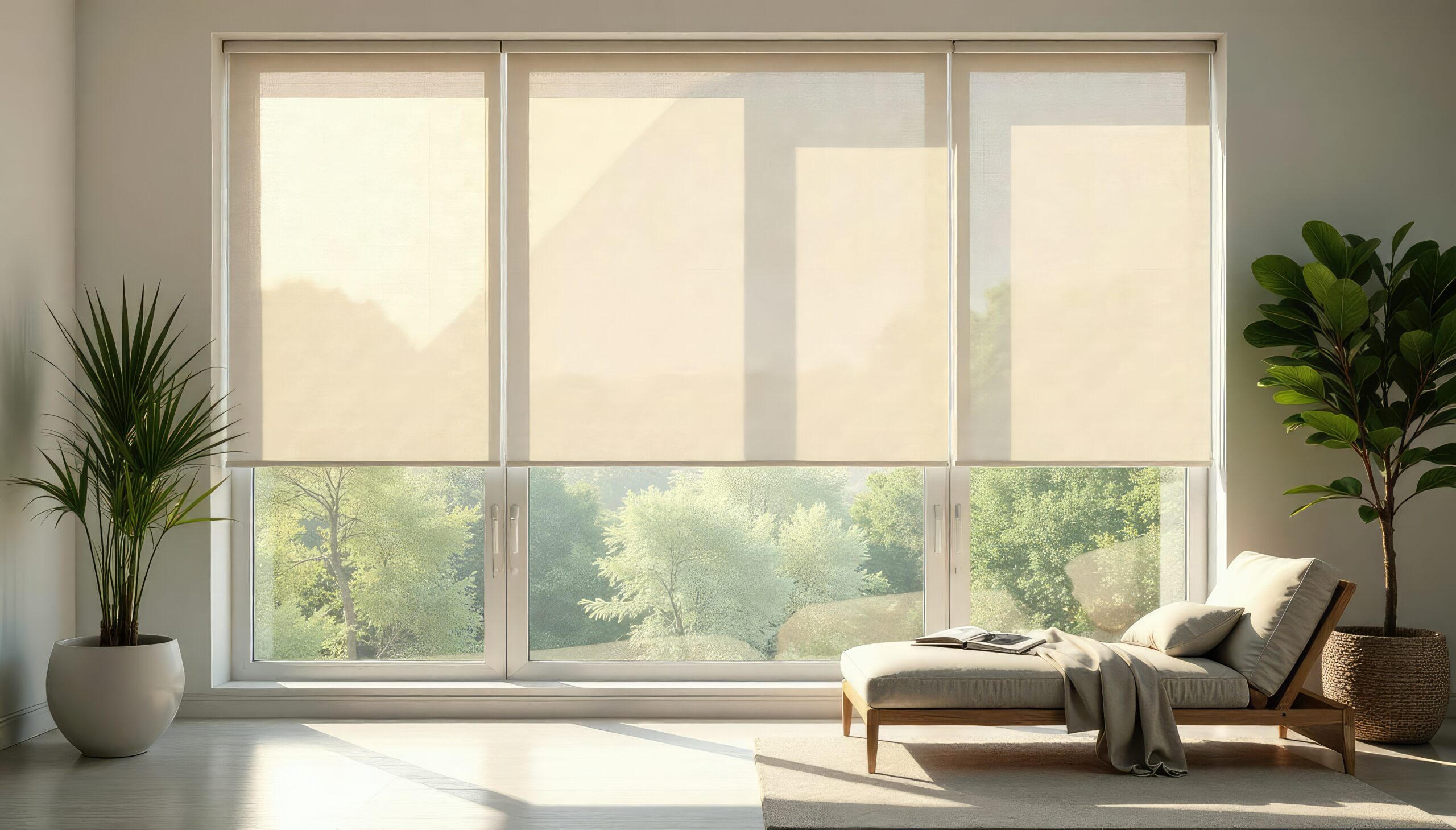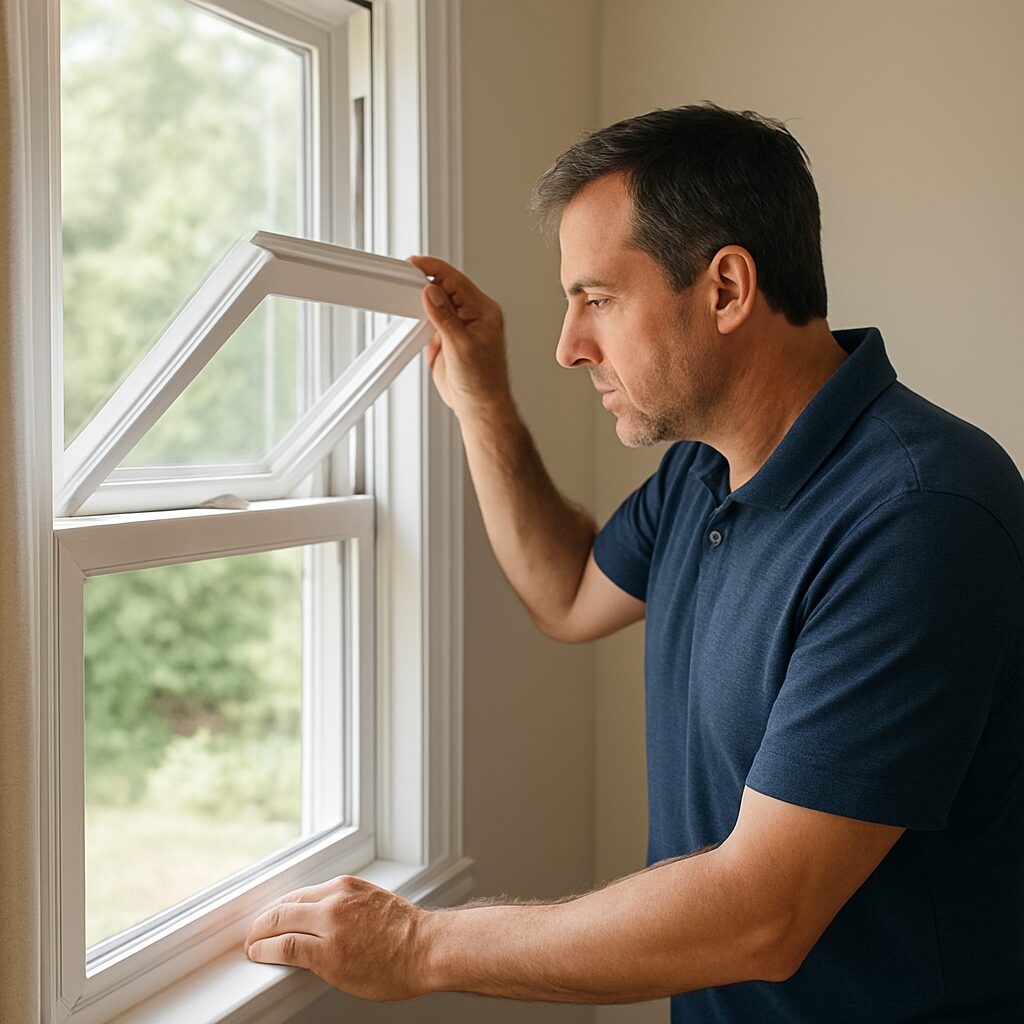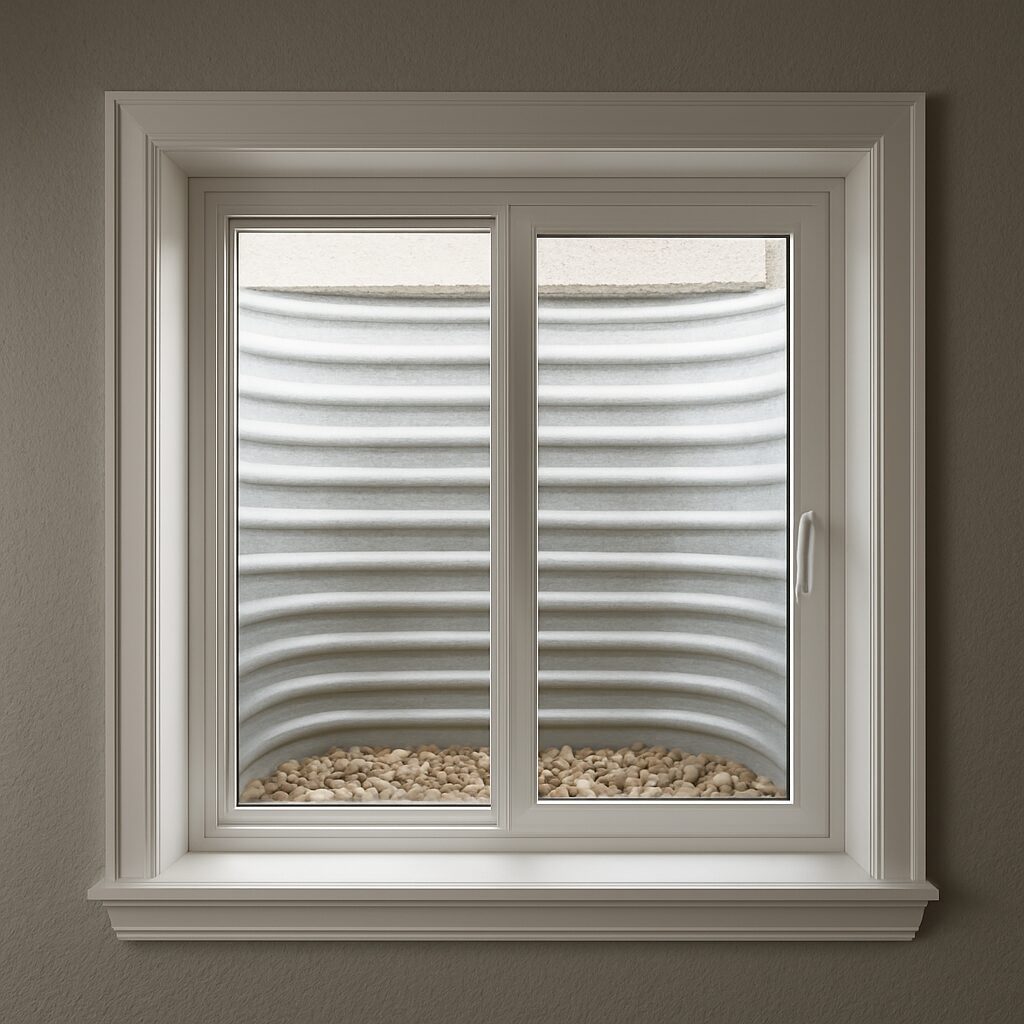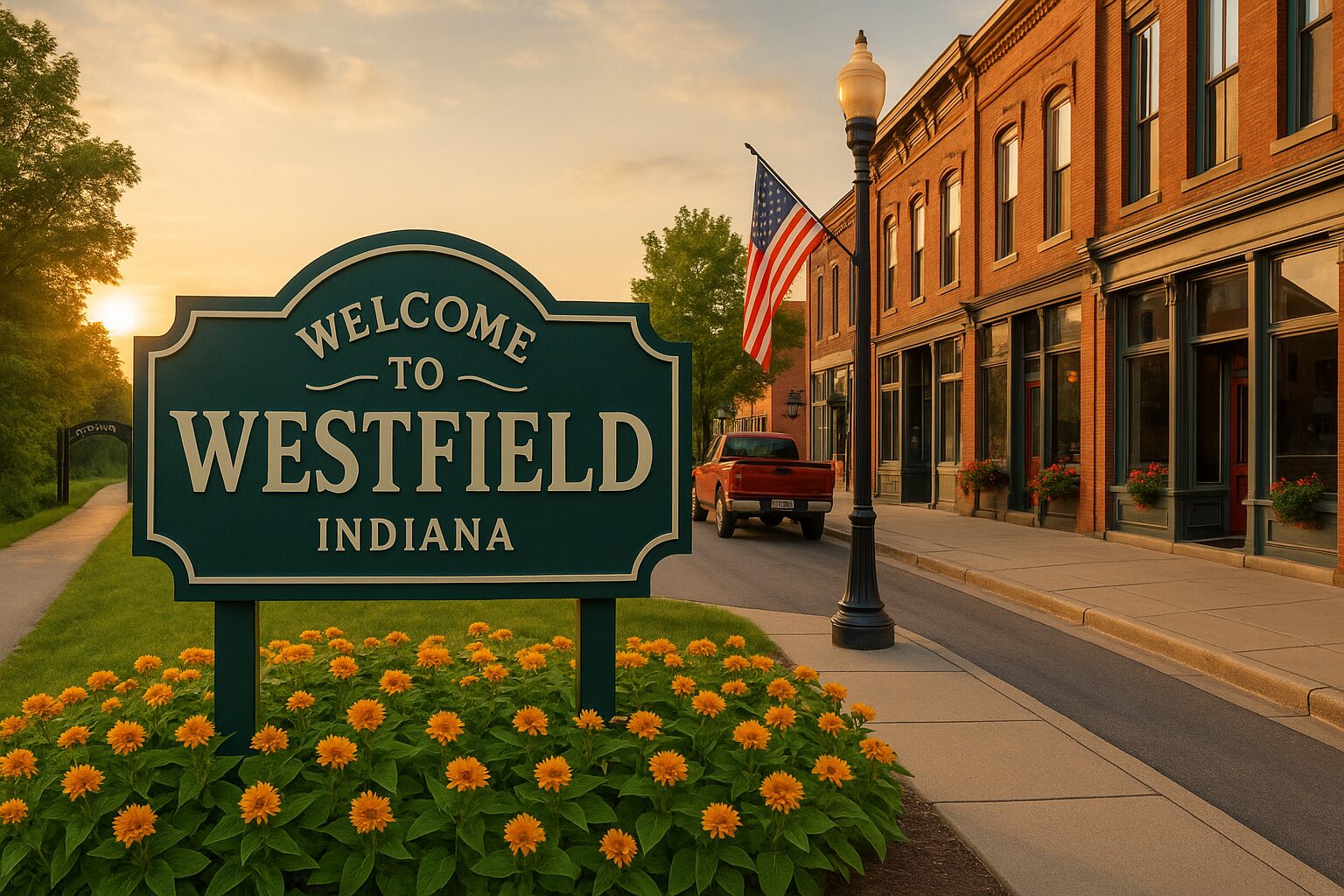The Window Man Guide to Energy-Efficient Windows (Climate Zone 5 Edition)
Introduction: Why Energy Efficiency Matters in Indiana
Living in Indiana means dealing with weather extremes that can put your home—and your wallet—to the test. Indiana sits squarely in Climate Zone 5 (North-Central), which means we face both hot summers and cold winters. One day you’re cranking up the air conditioning to beat 90-degree heat and humidity, and a few months later you’re battling subzero temperatures that seem to seep through every crack.
With rising energy costs hitting homeowners hard, smart Indiana residents are looking for ways to cut their heating and cooling bills without sacrificing comfort. The answer often lies right in front of you—literally. The energy-efficient windows Indiana residents choose can make the difference between reasonable utility bills and eye-watering monthly statements.
This guide will help you understand exactly what to look for when shopping for the energy-efficient windows Climate Zone 5 demands, decode those confusing window labels, and make smart decisions that keep your money in your pocket where it belongs.
Understanding Climate Zone 5
Before diving into window specifications, let’s talk about what Climate Zone 5 actually means for your home. The U.S. Department of Energy divides the country into climate zones based on heating and cooling needs, and Indiana falls into the North-Central zone.
Here’s what Climate Zone 5 means for Indiana homeowners:
• Balanced performance needs: Unlike northern states that focus mainly on keeping heat in, or southern states that prioritize keeping heat out, Indiana needs windows that excel at both
• Winter heating priorities: In cold climates, the goal is to maximize winter solar heat gains (high SHGC) and minimize heat loss (low U-Value)
• Summer cooling considerations: Hot, humid summers mean your windows also need to manage solar heat gain effectively
• Year-round comfort: The best windows for Indiana provide consistent performance whether it’s January or July
Breaking Down the Window Ratings
Simplifying technical terms into homeowner-friendly language
Shopping for energy-efficient windows in Indiana means understanding four key performance ratings. Think of these as your window’s report card—but instead of grades, you get numbers that tell you exactly how well your windows will perform.
U-Factor: Your Heat Loss Report Card
U-factor measures how well a window prevents heat from escaping. The lower the U-factor, the more energy-efficient the window. Picture this: if your home’s heat is trying to escape through your windows, the U-Factor tells you how much gets away.
• What to look for: U-Factor of 0.30 or lower for Climate Zone 5 • Why it matters: High-quality double-glazing windows have a U-factor of about 0.27, while high-performance triple-glazed windows have a U-factor around 0.17 • Real-world impact: Lower U-Factor means your furnace doesn’t work as hard in winter
SHGC (Solar Heat Gain Coefficient): Managing Sun Power
SHGC measures how much solar heat is transmitted through a window. The lower the SHGC, the less solar heat it transmits and the greater its shading ability. In Indiana, you want this to be moderate—not too high (overheating in summer) or too low (missing out on free winter heat).
• What to look for: SHGC between 0.25-0.40 for Climate Zone 5 • The balancing act: In colder climates, the ideal window for a South-facing wall has a higher solar heat gain coefficient (SHGC) and a low U-factor to reduce heat loss • Window orientation matters: Windows that face East and West should have a low SHGC or be shaded, especially West-facing windows since they get hit by summer sun at the warmest part of the day
Visible Transmittance (VT): Let There Be Light
Visible transmittance (VT) is the fraction of visible light that passes through the glazing. A higher VT means more natural light enters the building. This affects how bright your rooms feel and how much you’ll rely on artificial lighting.
• What to look for: VT between 0.40-0.70 for good natural lighting • Trade-offs to consider: Some high-efficiency coatings can slightly reduce visible light
Air Leakage: The Draft Detective
Air leakage is the rate of air movement around a window in the presence of a specific pressure difference. A product with a low air leakage rating is tighter than one with a high air leakage rating. This is where quality installation becomes crucial.
• What to look for: 0.30 CFM or lower (industry standard) • Superior performance: High-performance windows can achieve 0.15 CFM or even 0.01 CFM for exceptional airtightness
ENERGY STAR & NFRC Labels: What to Look For
Walking into a window showroom can feel overwhelming, but two labels will be your best friends: ENERGY STAR windows Indiana certification and the NFRC label.
ENERGY STAR Requirements for Climate Zone 5
Recent updates to ENERGY STAR 7.0 requirements have made the standards more stringent. For North-Central climate zones like Indiana, windows must now meet a U-Factor of ≤ 0.25 and SHGC of ≤ 0.40.
Key requirements for ENERGY STAR windows Indiana homeowners should know:
• U-Factor: ≤ 0.25 (previously 0.30) • SHGC: ≤ 0.40 (unchanged) • Tax credit eligibility: To qualify for federal tax credits, windows must meet “Most Efficient” certification with U-Factor ≤ 0.20 and SHGC ≤ 0.25
How to Read NFRC Window Labels
The National Fenestration Rating Council (NFRC) provides independent ratings that allow you to compare between energy-efficient products. Every certified window carries this label—here’s how to decode it:
What you’ll see on the label:
• Manufacturer and product info: Including frame material and glass type • U-Factor: Ranges from 0.1 to 1.2; the lower the number, the less heat escapes • SHGC: Scale from 0 to 1; lower numbers block more solar heat • VT: How much visible light comes through • Air Leakage: Range of ≤ 0.1 to 0.3; lower is better • Condensation Resistance (optional): Scale from 1 to 100; higher numbers resist condensation better
Pro tip: NFRC ratings represent the entire window performance, including frame and spacer material, not just the glass. This gives you the complete picture of how your window will actually perform.
Frame Materials & Glass Options That Work in Zone 5
Choosing the best windows for cold climates means understanding both frame materials and glass technology. In Indiana’s variable climate, some materials clearly outperform others.
Frame Materials for Indiana Weather
Vinyl Frames • Pros: Low maintenance and provide good thermal insulation. Sections may be hollow or filled with foam insulation • Best for: Budget-conscious homeowners wanting solid performance • Climate fit: Excellent for Indiana’s temperature swings
Fiberglass Frames • Pros: Strong, durable, low maintenance, and provide good insulation. Can be either hollow or filled with foam insulation • Best for: Homeowners wanting premium performance and longevity • Climate fit: Low conductive foam-filled fiberglass frames are ideal for cold climates
Wood-Clad Frames • Pros: Strong, provide good insulation, and are generally favored in historical neighborhoods. The exterior surfaces are often clad with aluminum or vinyl to reduce maintenance • Best for: Historic homes or those wanting traditional aesthetics • Climate fit: Good insulation but requires more maintenance
Aluminum Frames • Pros: Durable, low maintenance, recyclable, and typically have at least 15% recycled content. Frame design typically includes thermal breaks to reduce conductive heat loss • Climate consideration: Require thermal breaks to perform well in cold climates
Glass Options: Double-Pane vs. Triple-Pane
Double-Pane Windows • Performance: Clear double glazing has an R-value of 2 (about U-0.5), while high-quality double-glazing windows have a U-factor of about 0.27 • Best for: Most Indiana homes seeking good performance and value • Cost advantage: Significantly less expensive than triple-pane
Triple-Pane Windows • Performance: Clear triple glazing has an R-value of 3 (about U-0.33), with high-performance triple-glazed windows achieving U-factors around 0.17 • Energy savings: When you upgrade from single pane windows to triple pane, you can potentially save over $500 a year on your energy bills • Best for: Energy-conscious homeowners in extremely efficient homes or very cold microclimates
Low-E Coatings and Gas Fills
Low-E Coatings for Indiana Low emissivity glass contains an invisible layer that’s thinner than a human hair. In cold climates, low-e coatings applied to the interior glass prevent heat loss and can help reduce heat loss by as much as 30 to 50%
• For south-facing windows: Higher SHGC low-E to capture winter sun • For east/west windows: Lower SHGC low-E to control summer heat gain • Performance benefit: Dramatically improves insulation without blocking views
Gas Fills: Argon vs. Krypton Argon and krypton are natural gases that are denser than air and provide thermal efficiency to the window. The heaviness of the two gases increases insulation and further prevents heat from escaping
• Argon: Most common, cost-effective upgrade for double-pane windows • Krypton: Perfect for triple pane’s tight chambers, more expensive but higher performance
Energy Efficiency in Action: Real-World Impact
When Indiana homeowners invest in energy-efficient windows Indiana weather demands, the benefits go far beyond just lower utility bills—though those savings are certainly welcome.
Heating and Cooling Cost Reduction
Winter heating savings: Replacing existing windows with more efficient Energy Star windows can save Americans 13 percent, on average, on their home energy bills. For Indiana homes, this translates to:
• Reduced furnace runtime during cold snaps • More consistent indoor temperatures • Lower natural gas or electricity bills
Summer cooling benefits: Properly selected windows reduce air conditioning loads by blocking unwanted solar heat while maintaining natural light.
Comfort Improvements Indiana Residents Notice
No more drafty rooms: As one Indianapolis homeowner noted: “The house was warmer this winter and also much quieter than before. It just feels nicer in here than it did with the old windows. I love it!”
Temperature consistency: Quality windows eliminate hot and cold spots near windows, making rooms more comfortable year-round.
Noise reduction: Double and triple-pane windows significantly reduce outside noise from traffic, neighbors, and weather.
Return on Investment (ROI)
Immediate benefits: • Monthly energy bill reductions starting right away • Improved home comfort and livability • Reduced HVAC system wear and tear
Long-term value: • Increased home resale value • Modern windows are a strong selling point for buyers • Potential qualification for utility rebates and federal tax credits
Tax credit opportunity: Eligible windows qualify for 30% of the window cost, up to $600 for eligible windows under current federal programs.
Why Installation Quality Matters
Here’s a hard truth: you can buy the most expensive, highest-rated energy-efficient windows Indiana money can buy, but if they’re installed poorly, you’ll still have drafts, leaks, and energy waste. Note that air leakage also depends on proper installation of a window, which is assumed in all ratings.
The Window Man’s No-Compromise Installation Approach
Why we don’t use subcontractors: When you hire subcontractors, you’re adding a layer of separation between you and the people actually installing your windows. At Window Man, our own trained crews handle every installation because we stand behind our work.
Proper flashing and sealing: • Comprehensive weatherproofing around the entire window frame • Quality flashing to direct water away from the opening • Professional-grade sealants that maintain flexibility through temperature changes • Proper insulation around the frame to eliminate thermal bridging
Long-term performance focus: • Windows are installed level and square for proper operation • Hardware is properly adjusted for smooth operation and tight sealing • Trim work is precision-fitted to enhance both appearance and weather protection
What Poor Installation Costs You
Energy waste: Even a small gap can allow significant air leakage, negating the benefits of high-performance windows.
Moisture problems: Improper flashing can lead to water intrusion, rot, and mold issues.
Shortened window life: Windows that aren’t properly supported and sealed may fail prematurely.
Warranty concerns: Many manufacturers require certified installation to maintain warranty coverage.
Conclusion: Choosing the Right Window for Your Indiana Home
Shopping for window replacement doesn’t have to be overwhelming when you focus on the fundamentals. Remember these key points:
Climate Zone 5 requirements: • U-Factor of 0.25 or lower for ENERGY STAR qualification • SHGC between 0.25-0.40 for balanced year-round performance • Quality frame materials that handle Indiana’s temperature swings
Best windows for Indiana winters: • Double-pane minimum, triple-pane for maximum efficiency • Low-e windows Indiana weather demands, with appropriate coatings for window orientation • Argon or krypton gas fills for enhanced insulation
Installation excellence: The best window poorly installed performs worse than a good window installed correctly.
You don’t have to figure this out alone. Every home is different, and factors like your home’s age, orientation, existing insulation, and your family’s comfort preferences all influence the best choice for your specific situation.
Ready to explore your options? Contact Window Man for a free, no-pressure consultation where we’ll assess your home’s specific needs and show you exactly how modern, energy-efficient windows can transform your comfort and reduce your energy bills. Because when it comes to window installation in Fishers, Carmel, Westfield, and throughout Central Indiana, experience and quality installation make all the difference.





